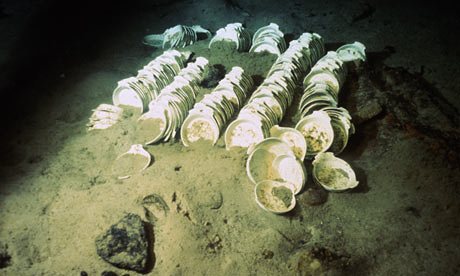You’ve probably seen the movie starring Leonardo diCaprio and Kate Winslet, but how well do you really know the Titanic?
Let’s take a look at real photos of the Titanic, inside and out.
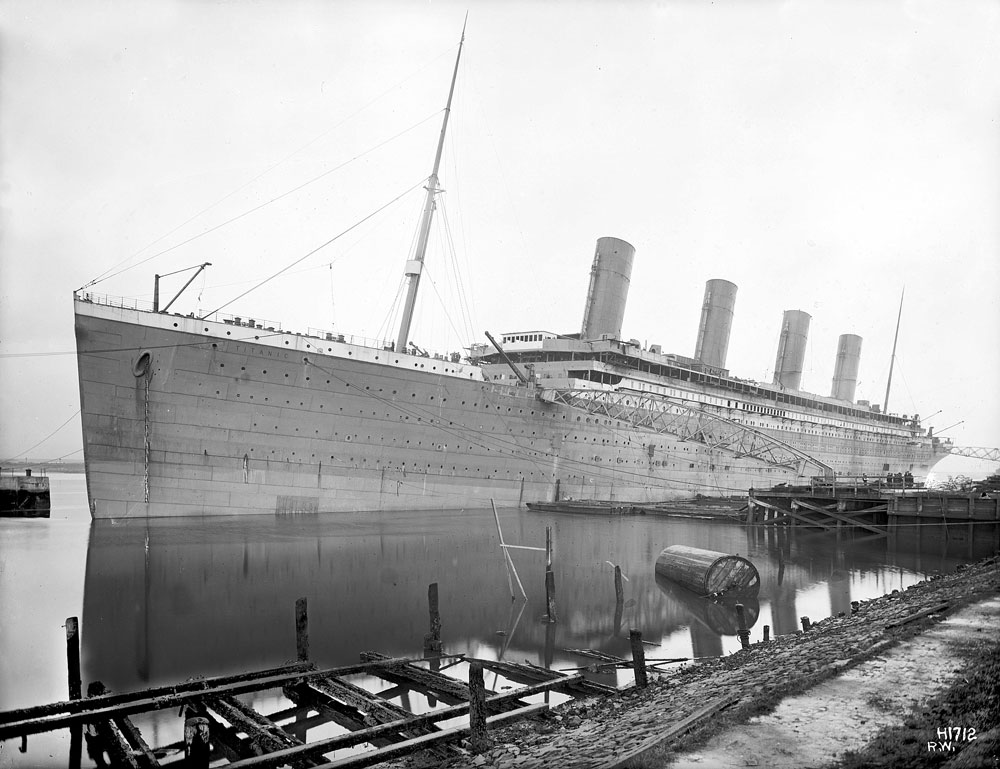
Photo: Titanic Fan Club
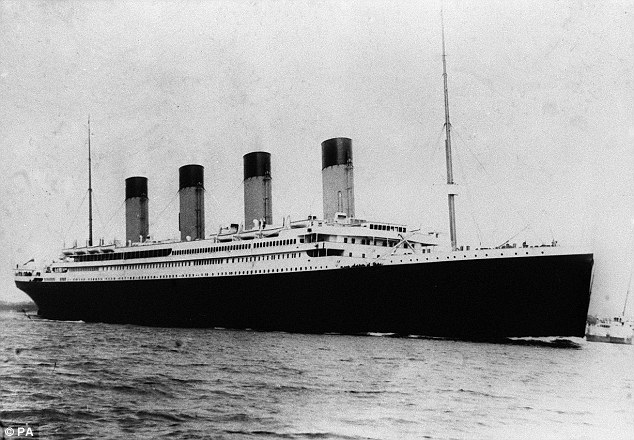
Photo: Daily Mail
The Titanic reached the length of 882 feet and stood at 104 feet tall. The boat consisted of nine decks, each containing something unique, like the grand staircase and various restaurants. One of the first decks, also known as the Promenade Deck, reached a length of 546 feet. This massive deck was only accessible to the First Class passengers because of it’s access to various First Class amenities. The amenities that were included were, a First Class smoke room, lounge, and a reading and writing room.
[ebaylistings]

Photo: Titanic Fan Club
The second deck, also called the Bridge deck, consisted of First Class lodging. The Bridge deck contained six separate state rooms which contained their very own promenade. While the Bridge deck mainly consisted of living quarters, they deck also featured some Second Class amenities. Although the Second Class didn’t have as many amenities as the First Class, the deck still contained a separate smoking lounge and hall for the passengers.

Photo: Best Time Pass
Below these decks followed the Saloon Deck, which was mainly consisted of a living quarters, a reception room, and a Saloon for the First Class passengers. Among these First Class amenities, this deck also contained a public space for Third Class passengers to gather. Below this deck there were also many other amenities for the Titanic passengers including the stewards and crew members. The massive ship also featured a Turkish bath, squash court, and a swimming pool.

Photo: Smithsonian
Consisting of three different engines, the ship combined reciprocating four cylinder engines with low pressure Parson turbines to power such a large ship. Each engine was 30 feet tall and weighed 1,000 tons. These engines were powered by 29 separate boilers that had to produce enough steam to power the engines. The boilers themselves were also massive, with a diameter of 15 feet and a length of 20 feet, the boilers weighed in at 91 tons. Each boiler was capable of holding around 48 tons of water.
[ebaylistings]
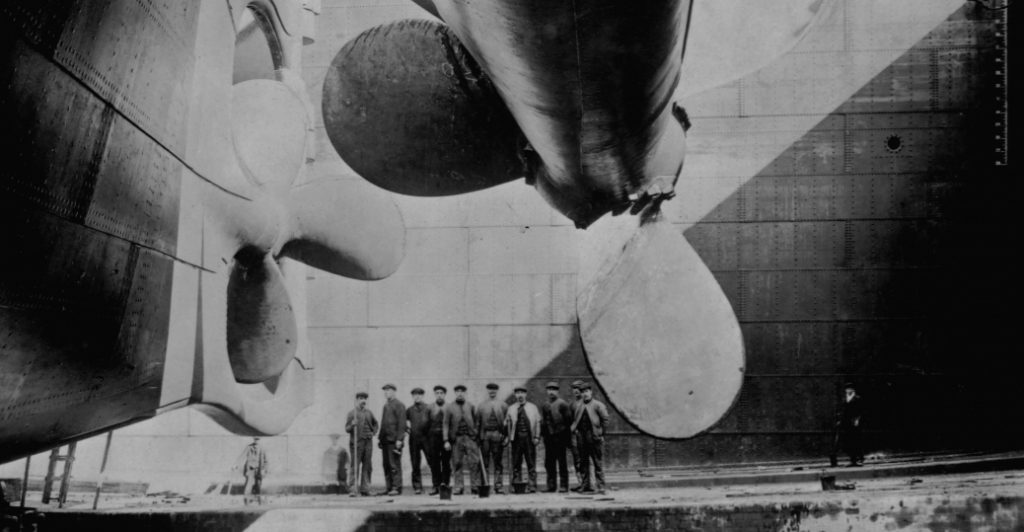
Photo: History
To heat the boilers, over 6,000 tons of coal had to be carried into the Titanic’s bunkers. Around 600 tons of coal was shoveled by hand into the furnaces to heat the engines each day. This job required close to 200 firemen to work around the clock. After the coal was burned, the crew members had to eject around 100 tons of ash into the sea just to dispose of it.
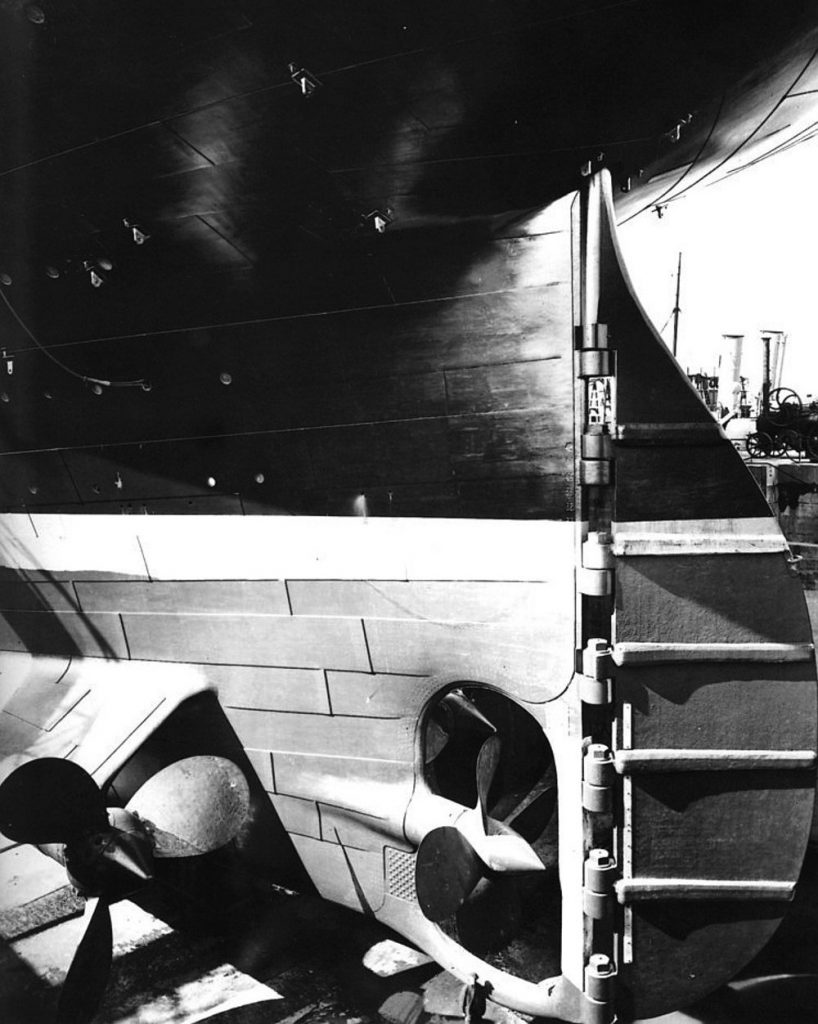
Photo: Wikipedia
The Titanic’s rudder was a massive 78 feet tall, 15 feet long, and weighed over 100 tons. In addition to the rudder, the massive ship had two separate steering engines installed. Only one engine was used at a time, but the other was kept in reserve. There were five anchors located on the ship, one at the port, starboard, centerline, and two kedging anchors.
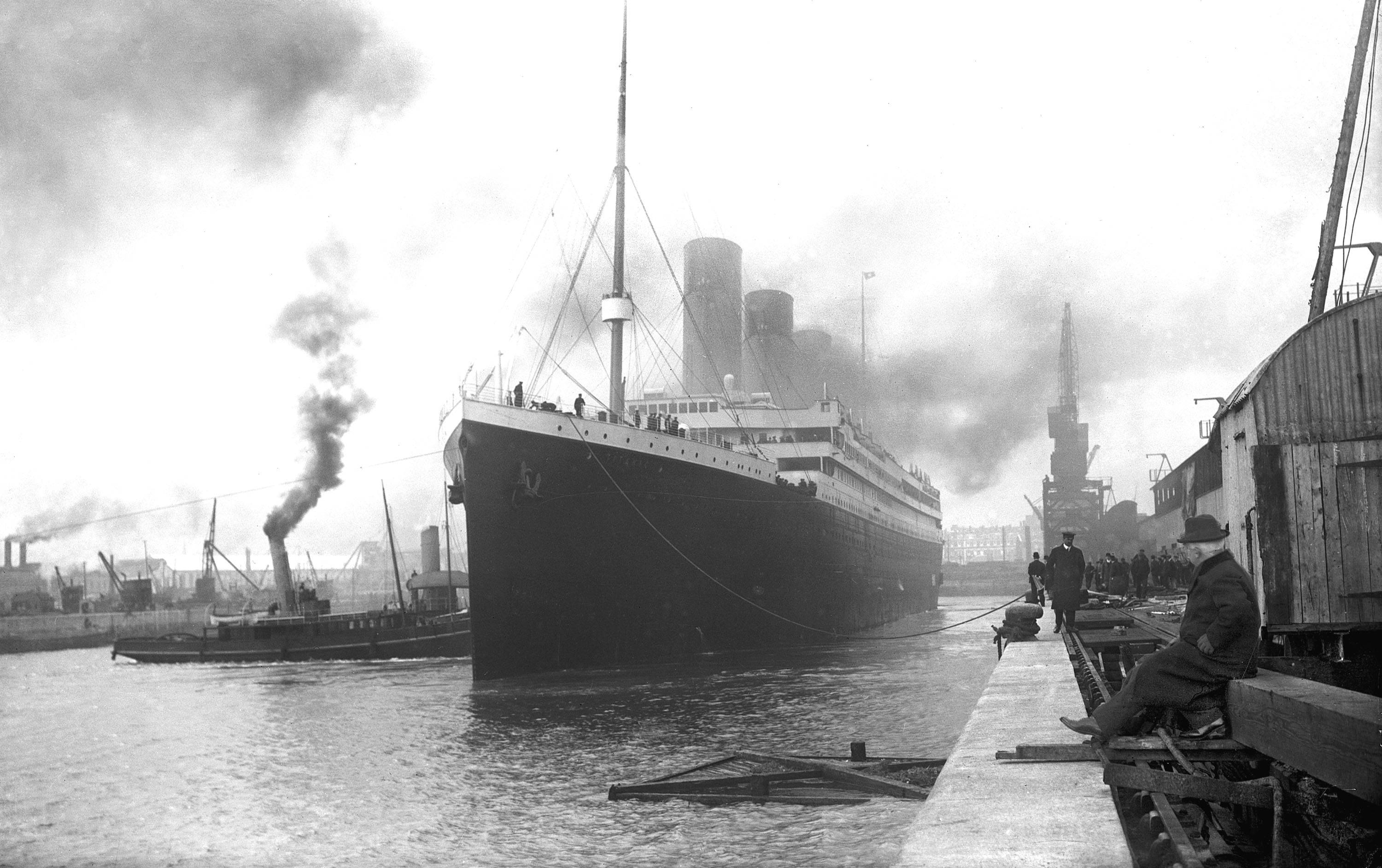
Photo: Smithsonian
The decor was based around the popular, high end hotel the Ritz. They used a variety of styles to furnish each level including Empire, Renaissance, and Victorian. The luxury ship aimed to impress its passengers by giving off the impression that they were staying in a hotel and not on a boat.
[ebaylistings]
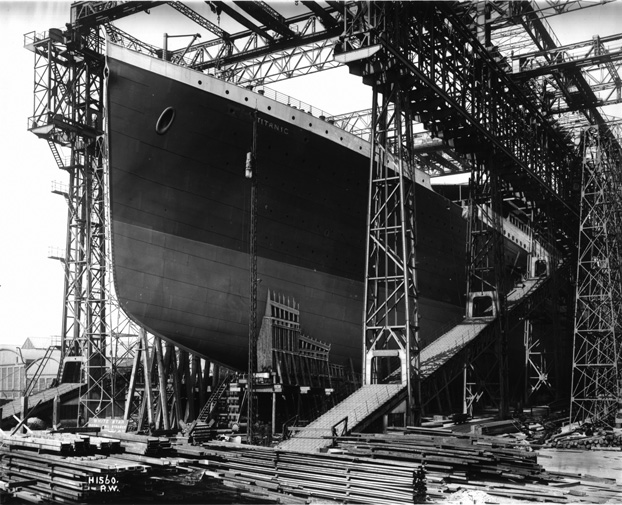
Photo: Discovery News
The Titanic had accommodations for over 2,000 passengers. The ship could accommodate 883 First Class passengers, 614 Second Class, and 1,006 Third Class passengers. Despite its ability to hold a large amount of passengers, the ship did not meet capacity.

Photo: The Berry
Although the Titanic mostly carried people, it also carried some extremely valuable objects. The Post Office was located on the G Deck, where five individuals worked very long 13 hour days in an attempt to keep up with the daily mail. Despite rumors of the type of valuables lost on the ship there were very few expensive items brought with the passengers. However, one of the most famous items lost during the shipwreck was a jeweled copy of Rubaiyat of Omar Khayyam, which would be worth 36,000 dollars today.
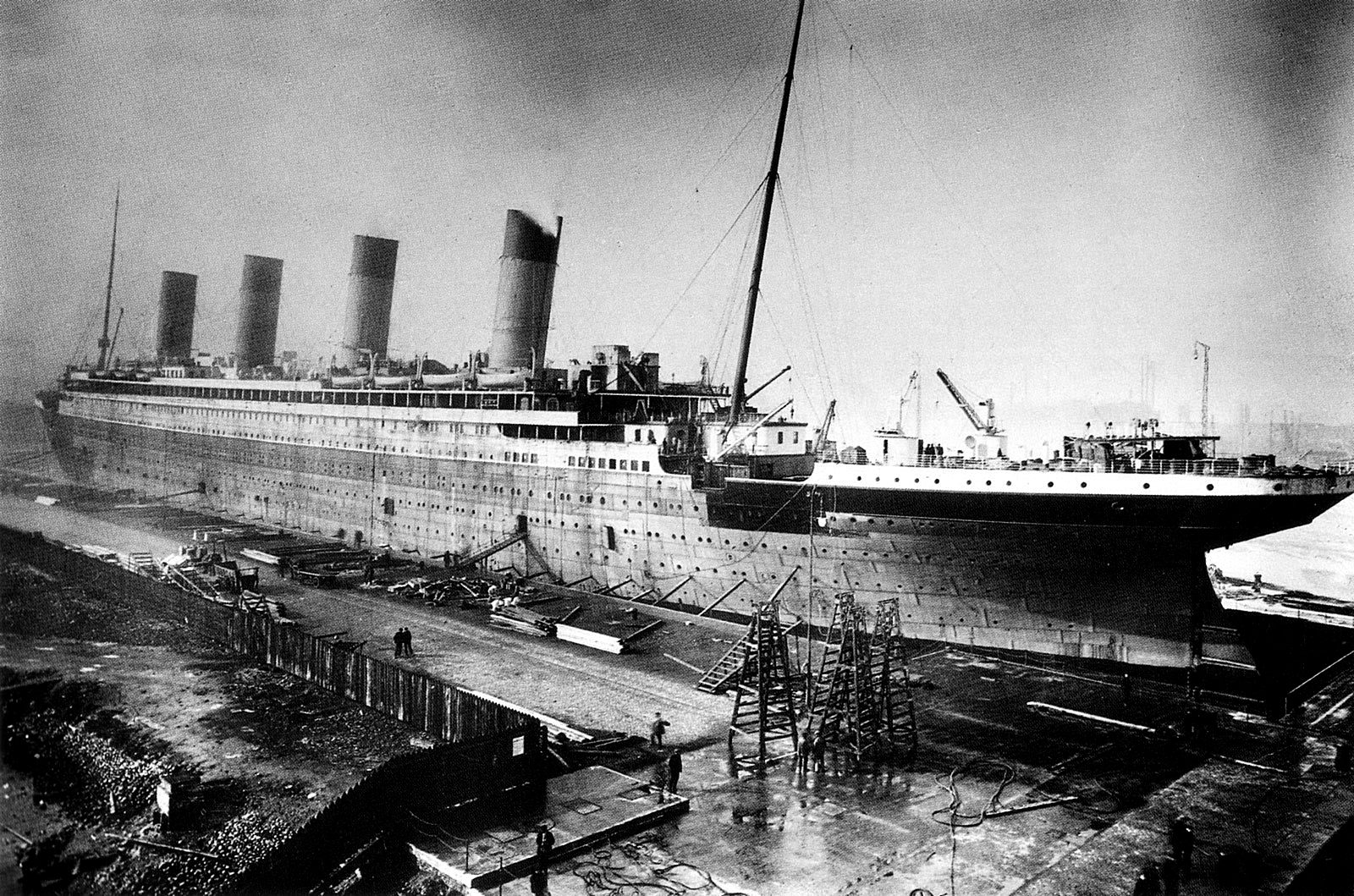
Photo: Wikipedia
The massive ship carried 20 lifeboats, each boat could hold up to 65 passengers. There were 16 wooden lifeboats that carried 65 people. In addition to these boats, the Titanic also brought along four “collapsable” lifeboats that would hold 47 people each. An additional two cutter boats that could hold 40 people were also brought along. Despite the large capacity each lifeboat could hold, many of the first few life boats sent off weren’t filled to capacity.
[ebaylistings]
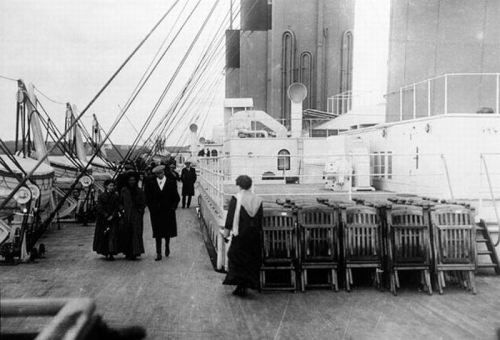
Photo: Pinterest
The ship employed over 800 crew members to help on the Titanic’s maiden voyage. Most of the crew members signed up shortly before the ship was to leave. The crew consisted of 66 members on the deck, 300 on the engine, and over 400 working on Victualling. Since the application process was not vigorous, most of the employees were not experienced on the sea.

Photo: Ultimate Titanic
The Titanic had approximately 1,317 passengers to board the maiden voyage. First class consisted of around 300 people, second class contained over 200, and over 700 people boarded as third class. Only 100 children were on board the ship, and most of them were staying with their families in the Third Class.
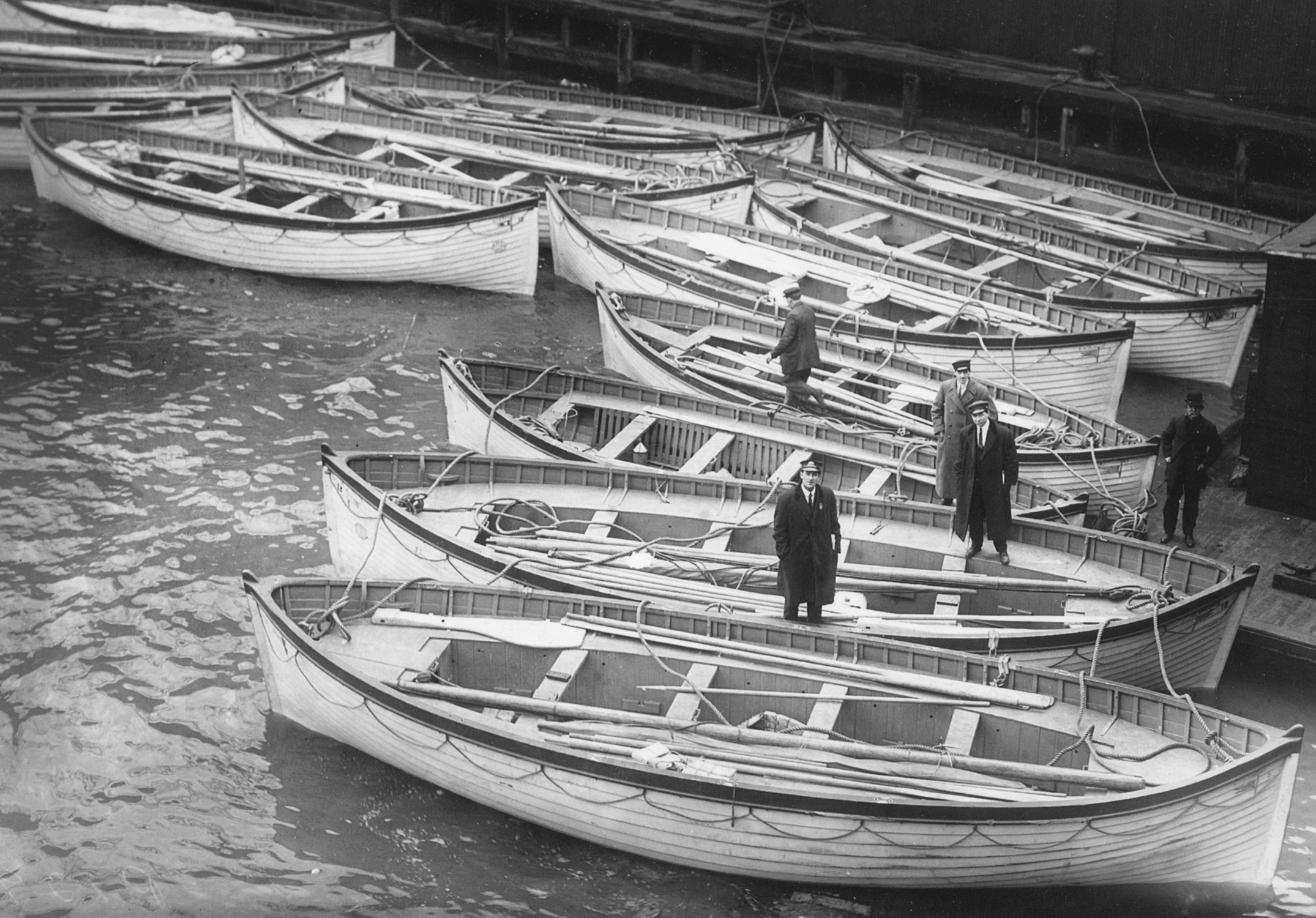
Photo: Smithsonian
The ship had the ability to board over 2,000 passengers, fortunately, the ship was well under capacity for its maiden voyage. Before the Titanic, many prestigious boats were usually completely booked before the ship sailed. However, the United Kingdom was going through a coal strike prior to the ship leaving. Many people decided to post pone their trip until after the strike, causing the passenger numbers to be very low.
[ebaylistings]
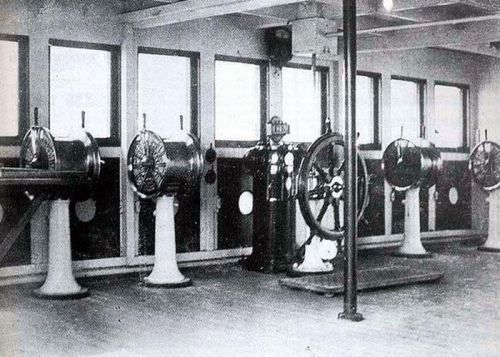
Photo: Pinterest
The iceberg was spotted at 11:40 PM on April 14th by lookout Frederick Fleet. He immediately alerted the ship and First Officer William Murdoch, he then ordered the ship to turn around and avoid the obstacle. A series of holes were created and five watertight compartments were exposed to the ocean. The ship began to sink from the bow, while water began spilling into the lower compartments as the Titanic began to tilt upwards.

Photo: The Berry
The Titanic was ill-prepared for the catastrophe that was about to come. At the time many large ships were expected to transfer passengers to a nearby rescue vessel in case of an emergency. However, the Titanic only contained the amount of life boats to safely transport half of the guests.

Photo: The Chronicle Herald
At 2:20 AM the boat began sinking at an alarming rate. The stern began to rise out of the water, forcing the propellers into the air. As the ship began to rise out of the water, the ship began to break in various parts.
[ebaylistings]
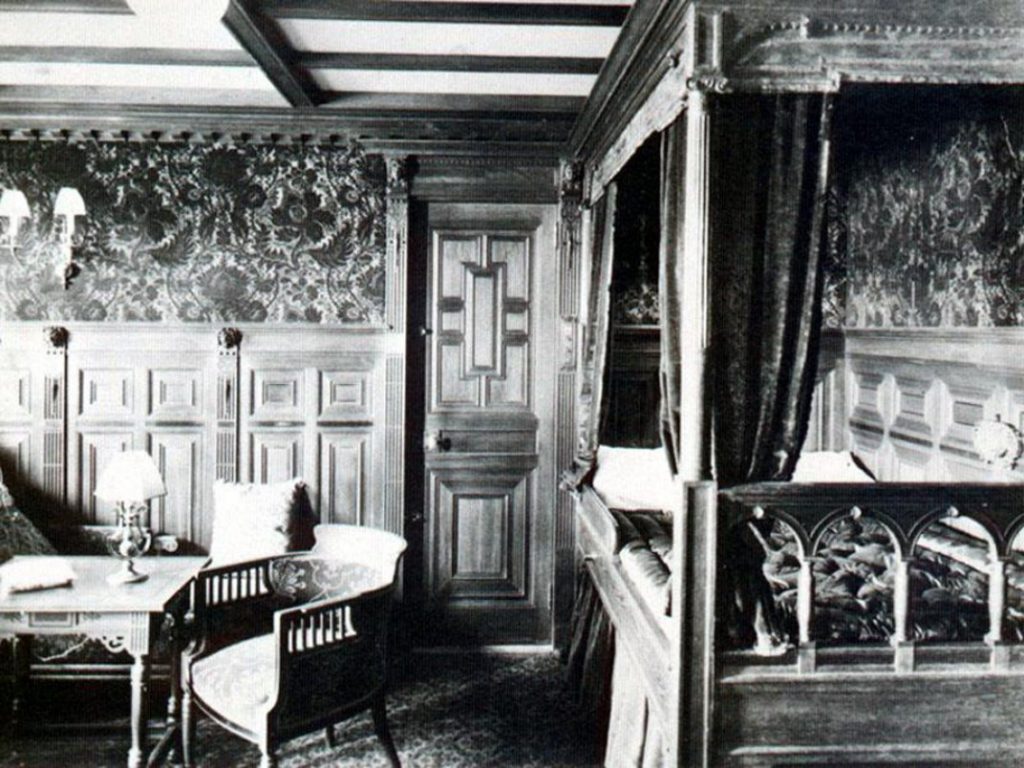
Photo: The Smithsonian
The bow was then completely submerged into the ocean while the stern remained afloat for a short period of time. The ship eventually rose to a completely vertical angle before it broke into two pieces. All passengers that remained on the ship were surrounded by freezing water.
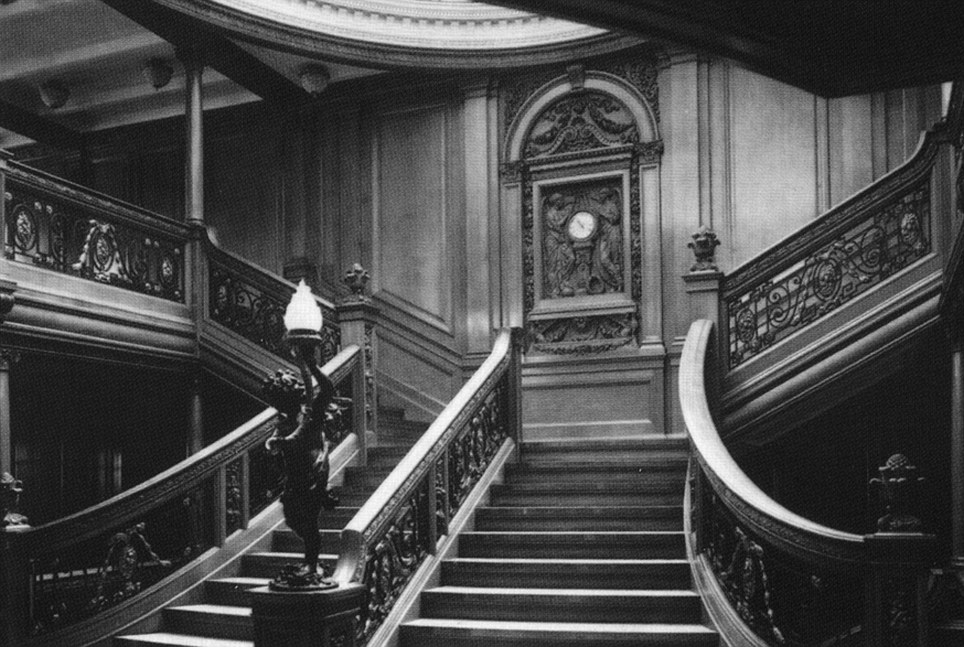
Photo: Daily Mail
Many of the passengers died of cardiac arrest due to the freezing water. It’s been reported that the temperature of the water that night was as low as 28 degrees. Only 13 of the passengers that had been submerged in the water were rescued. The remaining passengers all passed away after 15 to 30 minutes of floating in the freezing water.

Photo: Life Daily
Many distress signals were sent, but no ship was close enough to respond in a timely manner. The ship sank before anyone could come to its rescue. Two different ships, the Birma and the SS Californian, were sent the distress signal. Unfortunately, neither one of the ships was able to respond. Luckily, the RMS Carpathia arrived around 4 AM to help save the surviving members. The Carpathia was responding to one of the earliest distress signals that the Titanic had sent out.
[ebaylistings]
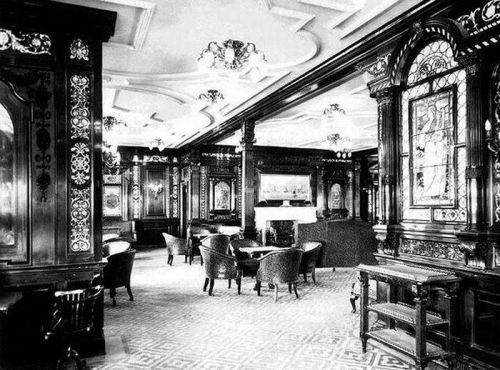
Photo: The Berry
The Carpathia sailed the surviving passengers to New York, but unfortunately, 1,500 passengers and crew members lost their lives. Only 710 passengers were rescued by the Carpathia. After the Carpathia arrived in New York, the Captain described the ocean as an ice field. There were reportedly around 20 different ice bergs reaching heights of 200 feet.

Photo: Lancastria
It took three days for the Carpathia to arrive in New York, their journey was slowed by the packs of ice, thunderstorms and rough seas. At around 9 AM, the Carpathia docked at Pier 54 to unload the surviving passengers. The passengers of the Titanic and Carpathia were greeted by 40,000 people that were there to help support the remaining passengers in their time of need.
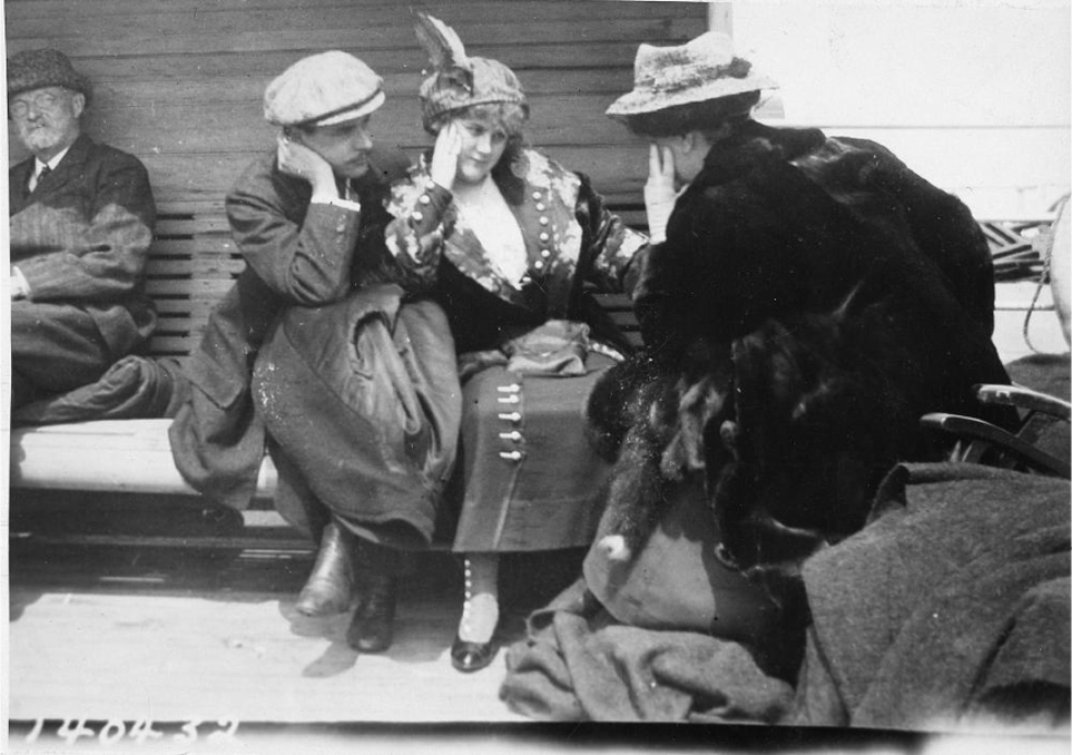
Photo: Smithsonian
The Carpathia was then immediately restocked and set to sail again. The ship got back on track and headed towards their original destination to Flume, Austria-Hungary. The crew members of the Carpathia also received a bonus for their heroic efforts. In addition to this, some of the surviving members gathered an additional bonus that was divided among all of the crew members.
[ebaylistings]

Photo: The Week
Less than a third of the Titanic’s passengers survived the crash. Some survivors even died shortly after being rescued and arriving in New York. Many families lost their sole breadwinner and received aid once they arrived in New York. Many of the Third Class families lost their breadwinner and everything they ever owned. These survivors also received support from many charities.
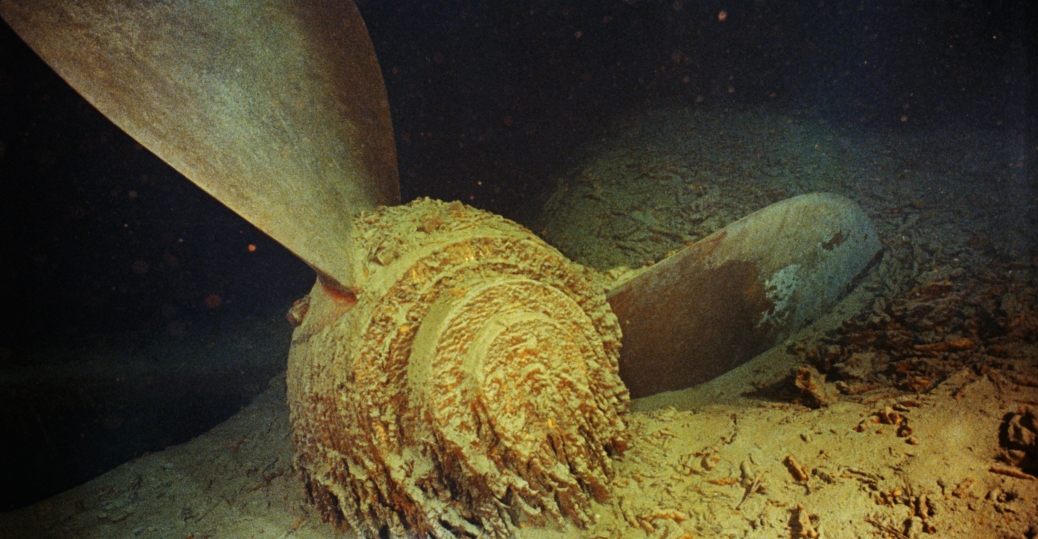
Photo: History
After the disaster occurred, the White Star Line immediately sent out another ship to retrieve the remains of the victims. The CS Mackay-Bennett sailed from Canada to retrieve the victims bodies. Three other ships were also sent to help clean up the disaster.
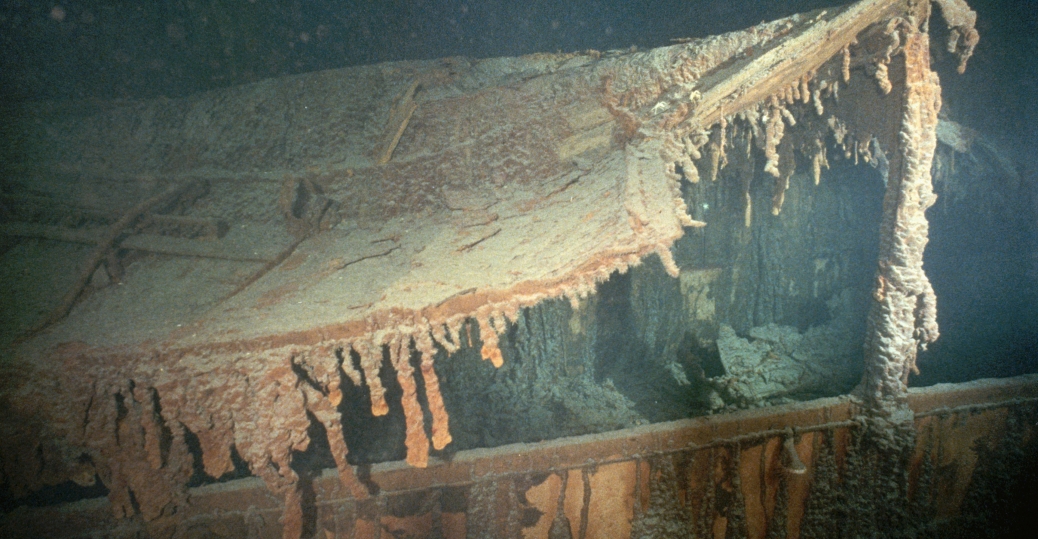
Photo: History
The ship retrieved 333 victims from the depths of the ocean. There were so many bodies found almost immediately that the ship began to run low on embalming supplies. The ships captain made the decision to only preserve the wealth First Class passengers. Unfortunately, many of the Second and Third Class passengers were left at sea.
[ebaylistings]

Photo: BBC
The bodies were transported to Halifax, the closest city to the wreck. Only around two thirds of the bodies were identified by family members. The remaining bodies were then buried with a number based on the order that they were found. These remaining victims were buried in one of three different cemeteries located in Halifax.

Photo: Geekstroke
In May 1912, several more bodies were discovered just 200 miles away from the wreck. These victims were originally occupying one of the few collapsable lifeboats that was on board. Along with a few crew members, the Fifth Officer, Harold Lowe went back to rescue some of the remaining survivors. These victims did not survive the cold and they were buried at sea.
On September 1st 1985, Robert Ballard succeeded in locating the sunken ship. Prior to this discovery, many people believed that the ship had sunk in one piece. This expedition revealed that the ship had actually split into two separate pieces before being submerged in the ocean.
[ebaylistings]
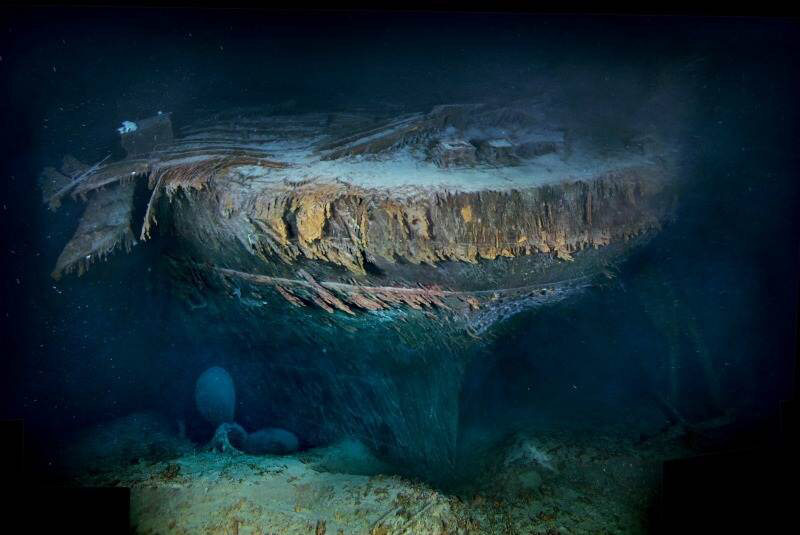
Photo: Imgur
The bow and stern can be found in a canyon located off the coast of Newfoundland. Both pieces collapsed entirely after crashing into the seabed at an alarming rate. The bow still remains in tact while the stern has been completely destroyed.
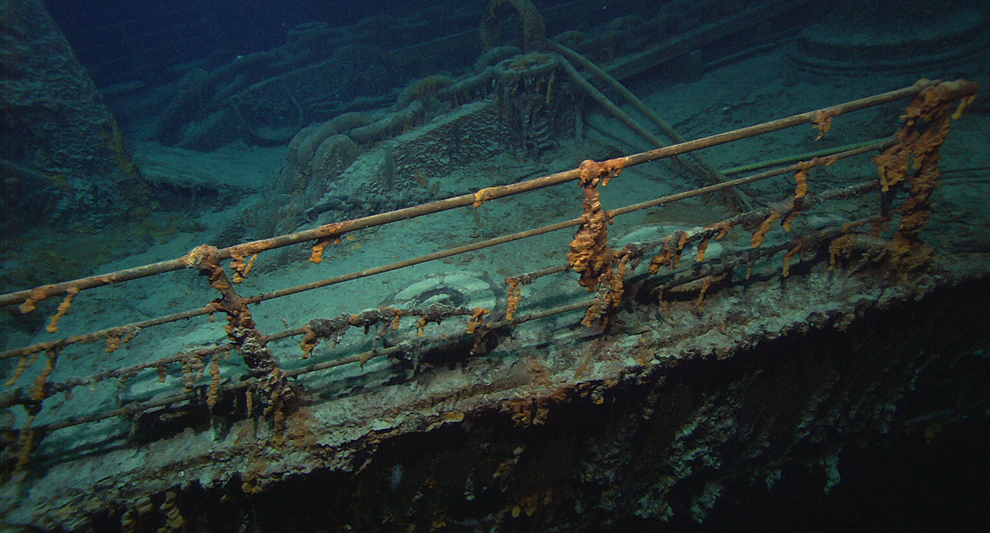
Photo: Boston
The wreck is surround by thousands of items that had sunk with the ship. These items include dinnerware, furniture, and plenty of personal items. The debris field is around 5 miles and also contains many of the victims. The only evidence that there ever were victims are leftover boots and clothing.
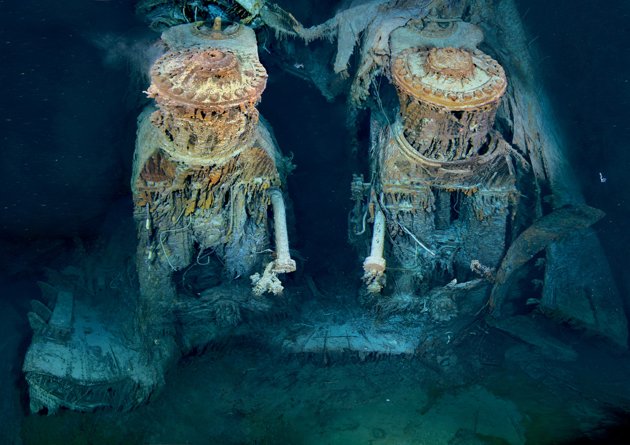
Photo: Defence Forum India
Since it’s original discovery, the ships remains have been visited by many other explorers. Some artifacts have even been recovered from the sea bed. The ship has continued to deteriorate underwater, but experts believe that the ship will completely collapse within the next 50 years.


